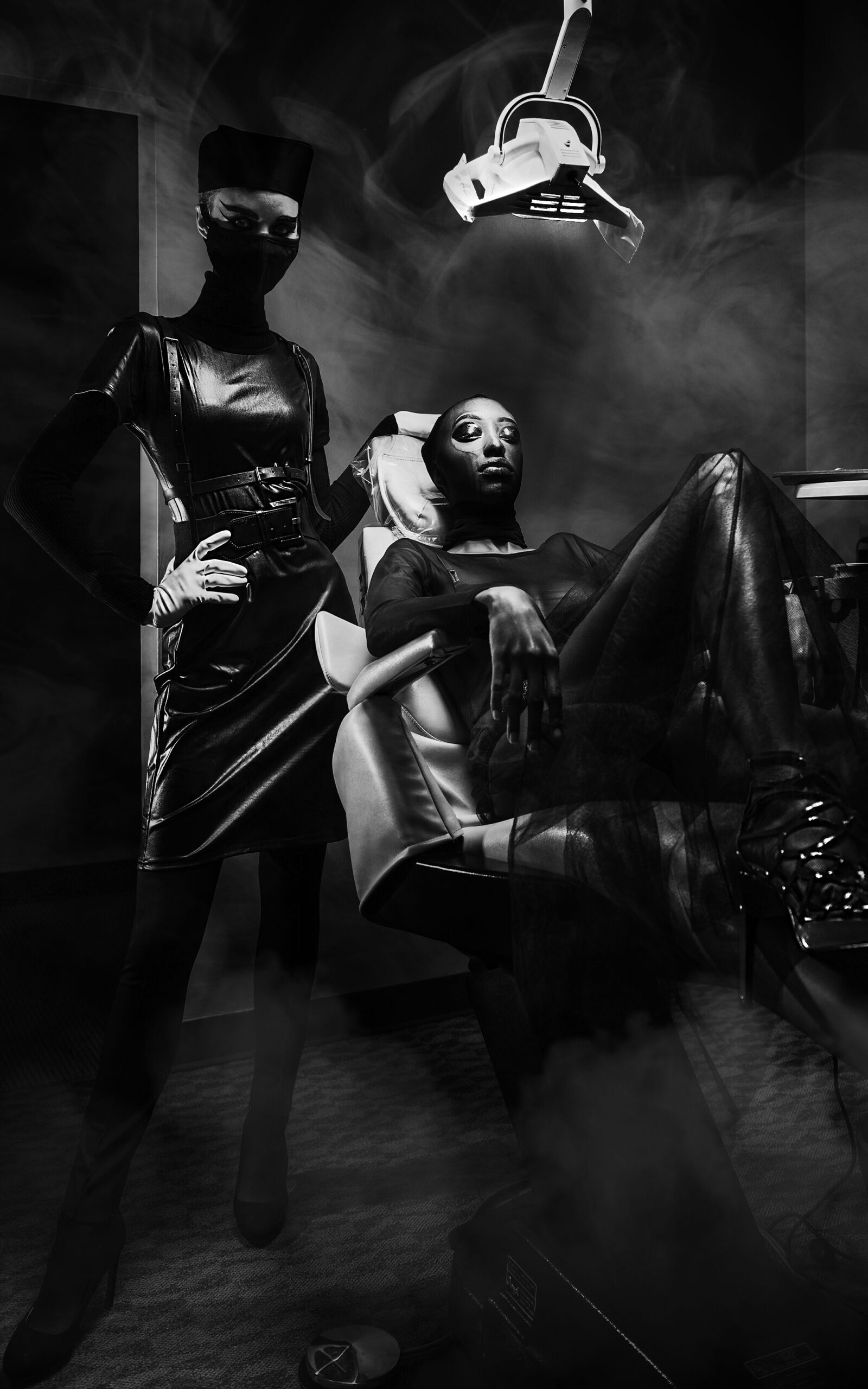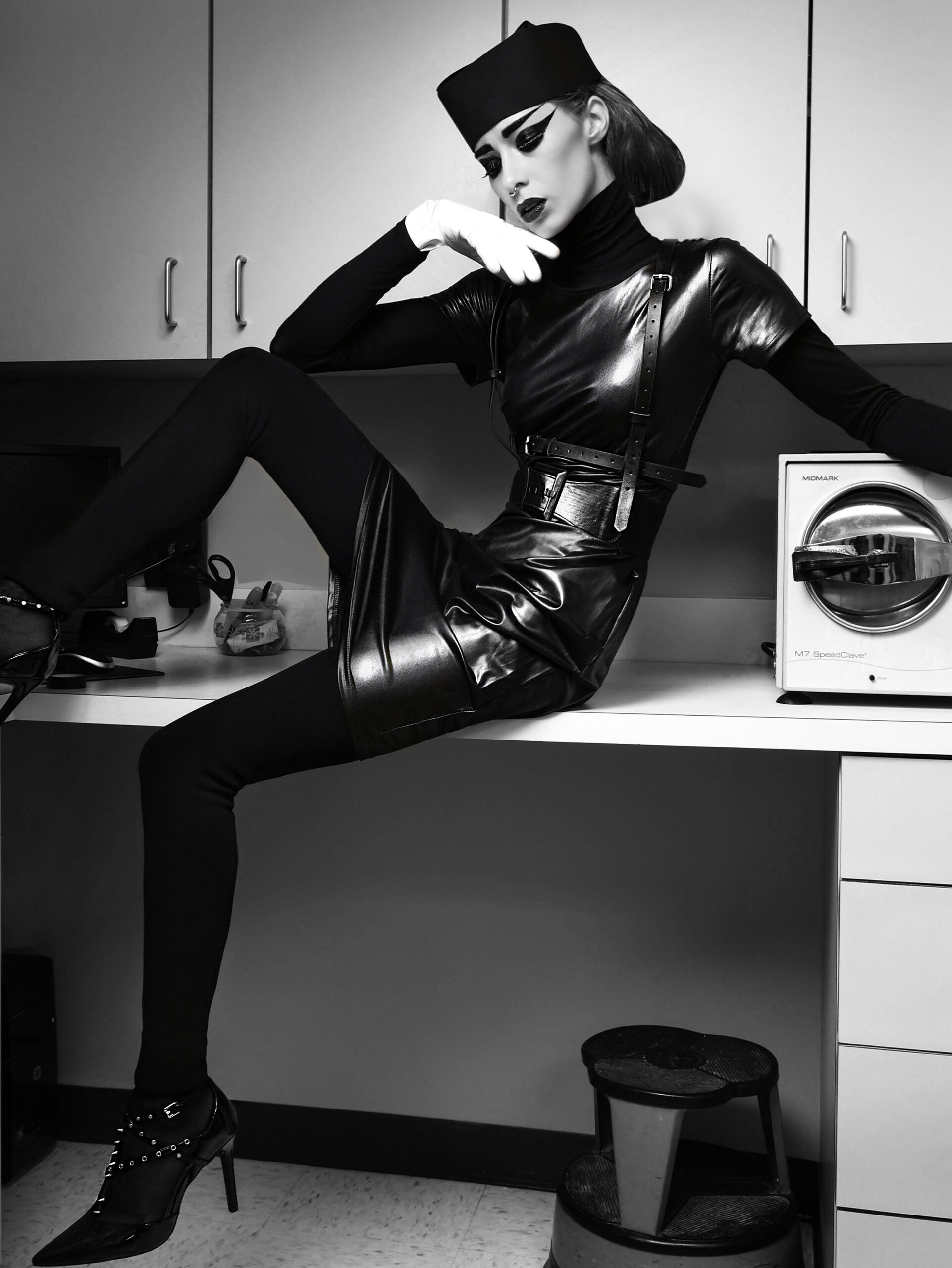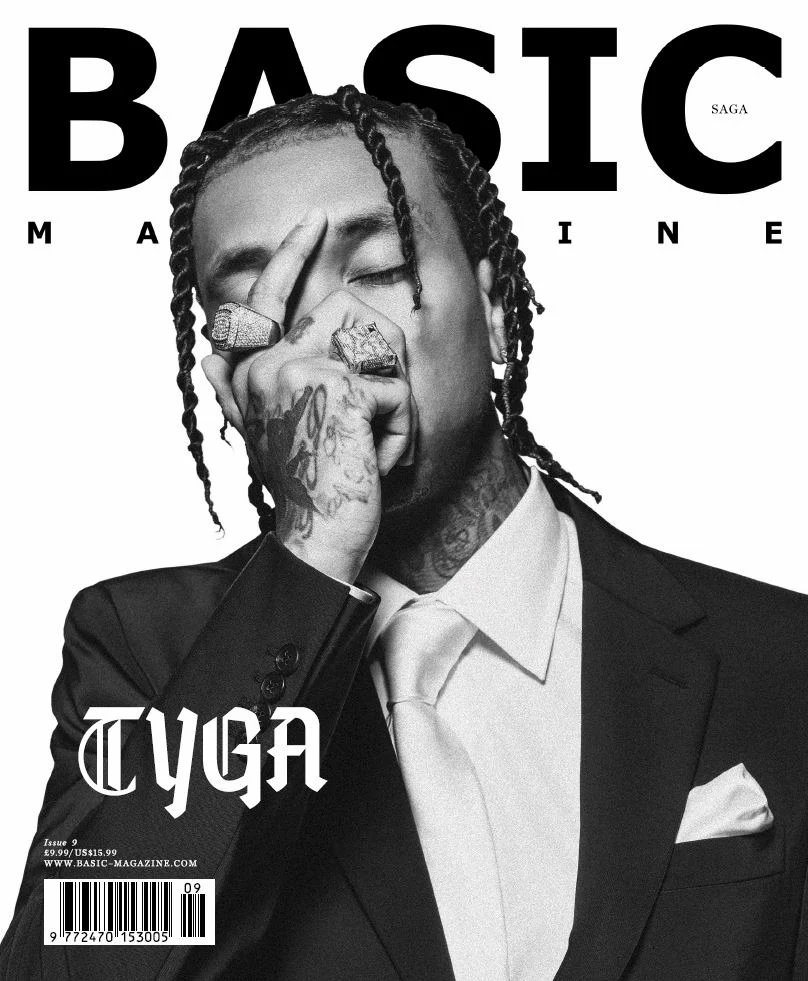Words by Kimberly Haddad
Photographer: Kareem Quow @kqphotography
Model: Clare Tompkins (Click ATL) @claremtompkins
Model: Caitlin McCormick (Click ATL) @cait_mccormick
Model: Jade Patton (Click ATL) @dakota.jade
Model: Shalinda Clarke (Salt Models) @shalindaclarke
Makeup: Patrice Story @patricestory_makeupartist
Makeup: Jackie Lynch @makeupbyjakkin
Makeup: Seneca @iamsinderella
Hairstylist: Brandy Andrews @brandyandrews_
Hairstylist: Melody Hale @melody_hale
Hairstylist: Trina Godfrey @envyurself
Fashion Stylist: Sieje Akime @siejeakime012n
Cinematographer: Joe Teixeira @joetexx
Production Assistant: Chynna Teixeira @heyitschynna

The interweaving of fetish paraphernalia into contemporary haute couture has gained prominence in the fashion world. Once an enigmatic subculture of forbidden lust and sexual deviation, the kink community has become an intrinsic part of fashion—creating unapologetic, bold and striking style statements. From fetish staples, including harnesses, bondage gear, latex, rubber, corsets, vinyl and PVC, iconic materials have been seen time and time again in editorials, on the runway and in the closets of some of Hollywood’s leading luminaries.
Long before treasured films like Belle de Jour (1967) and Secretary (2002) made their way to the big screen, fetish fashion and BDSM had already entered the mainstream world. From Jean– Paul Gaultier’s 1950s radical bullet bras, later popularized by Madonna, to Gianni Versace’s “Little Miss S&M” collection showcased in winter of 1992, designers have found inspiration in glam–rock, anarcho-punk, dark-wave and kink cultures alike.
The term BDSM was originated in 1969, a compound initialism for the words: bondage, discipline, sadism and masochism. While the sexual kink revolves around intense power dynamics and erotic practices, the fetish community has also leaned on iconic costumes that have materialized throughout history as expressions of rebellious sexuality. The street-walkers and brothel prostitutes of the Victorian era accentuated their cleavage with tightly-strung corsets while the hobble skirts of the Edwardian era were skintight, forcing women to take “geisha–like” steps, and nearly restricting them from independent movement. These bondage-inspired essentials have evolved into street-wear trends and runway sensations, representing female sexual empowerment and an undeniable evolution of fetish fashion.
The word fetish was originally defined by the peoples of West Africa as an intimate object worshiped for its magical powers such as a charm or amulet. But during the 19th century, the term adopted a broader meaning, representing “an object of irrational devotion or reverence.” By the early 20th century, the word fetish embraced a new meaning: “a form of sexual desire in which gratification is linked to an abnormal degree to a particular object, item of clothing or part of the body.” Revealing an evident connection between sexual pleasure and seductive garments, the word fetish has made its mark in society and the aesthetic elements of BDSM are being mirrored in fashion more than ever before.


Today, we see esteemed makers like Vivienne Westwood, Claude Montana, Alexander McQueen, Betsey Johnson, Christian Dior and Anna Sui—all admirers and picker-uppers of the fetish fashion craze. “Over the last 30 years, fashion designers and trendy dressers have stolen from the fetishist’s closet—ultra-high heels, corsets, pointy bras, rubber mackintoshes, frilly underwear, leather gear, latex cat suits, body rings and tattoos,” said Journalist Sarah Boxer, in a book review for the New York Times. “The appropriation has been so masterly that there are people running around in leather corsets who don’t even know the fetishistic roots of their fashion. And there are fetishists running around fretting that their magical objects are losing their power.”
An industry ringleader and one of the most legendary fashion designers of the late 20th century, Vivienne Westwood, is particularly important when it comes to fetish wear. Known for working primarily with black and incorporating materials like leather, rubber, straps, studs and chains into her clothing, Westwood’s hypersexual creations drew from both punk-rock and the risqué subcultures of sex and sadomasochism that provided wearers a sense of freedom. Her bondage collection of 1976 went down in history as a phenomenon, pushing boundaries and giving bondage fashion a new range of meanings.
Chic corsetry and latex creations have also become runway darlings and made an influence on present-day fashion, repetitively appearing throughout the years. In 2008, Lady Gaga greeted Queen Elizabeth II in a red latex gown conceived by leading latex designer Atsuko Kudo. Oscar de la Renta’s spring/summer 2013 collection featured an abundance of leather, lace and latex with edgy garments, including both red and blue-green latex pencil skirts that garnered much attention from the media. And earlier this year, John Galliano, known for his romantic, yet flamboyant designs, draped his emaciated male models in corsets and vibrant vinyl trousers for his spring/summer 2019 collection. Evocative of gender nonconformity, his brilliant looks were created to “discover a new sensuality, a new sexuality.”
Alexander McQueen, a risk-taker and designer known for bringing a provocative juxtaposition of dark and light materials to the catwalk, has been another leader in terms of fetish-inspired movement. Embracing nudity and the shameless sex appeal of his clothing, his collections have displayed models adorned in latex-fused skirts, molded latex armor, metal body corsets, sheer fabrics, tassels and spiked boots. In 2009, McQueen transformed the runway into a deranged merry–go– round with horses sheathed in purple and black latex and models embellished in shiny leather, chains, gaudy headdresses and a plethora of thrashed lace.
A style genre once standard for fetish club-goers venturing to renowned joints like London’s Torture Garden continues to be assimilated into conventional fashion, dominating red carpets, runways and our day–to–day wardrobes. Though still an element of controversy, the mainstream adoption of such erotic clothing has become a milestone in modern society, signifying open-mindedness and a form of sexual empowerment that’s hard to ignore. Perhaps, it’s the taboo or enigmatic sexuality deep-rooted in alternative coteries such as BDSM that fascinate and appeal to fashionistas and mainstream consumers, but we cannot forget its subcultural connotations, as it sets the agenda for future trends.


Nina Kate- Creator of Jane Doe Latex
As a designer who is at the forefront of cutting-edge latex design, what are your views and opinions of the current fetish clothing scene?
I think things have changed a lot from even since I entered it back when I was a teenager. Everything is so accessible now. Before, there were only a handful of companies in each country, all who had spent time learning only through apprenticeships and you had to go to a store to buy things. It felt like a closely-guarded secret, something that you had to earn your way into. Nowadays, people can watch a YouTube video and buy a latex-making starter kit online. I think that the running of your own clothing company can sound like a fun and attractive thing to do, but I think sometimes people fail to realize all the other work that goes into it. It’s not just making pretty things. You have to deal with people and costs. You have to deal with deadlines and really put the time and effort into creating the most flattering patterns and well put together garments, and a million other things that aren’t so glamorous.
Latex, harnesses, PVC, vinyl and similar materials are making their way into haute couture, appearing on the runway and into the closets of Hollywood’s leading celebrities like Kim Kardashian, Brittney Spears and Miley Cyrus. Why do you think there is such a high demand for these fetish-inspired looks?
Since the beginning times of rock stars, there’s been shiny trousers and looks borrowed from fringe cultures. I guess now with more everyday celebrities embracing the looks, it’s more in the general public’s eye. It creates a kind of snowball effect. A latex dress says so much about a person and their attitude, it’s a hard thing to ignore and to not want to be part of.
BDSM is a sexual practice, with fetish-wear being a part of the act. While other subcultures like punk or grunge, for example, are associated with political beliefs and nonconformity, do you find that the mainstream adoption of fetish clothing is almost killing its kinky roots and making it all about style trends?
I think that’s exactly what they are taking from it and projecting back. They are using that power and raw sexuality as the style itself. To them, it’s like a slap in the face to the “normal” consumer. It’s impossible to ignore and it evokes a gut response, whether attraction, shock or horror. Perhaps they are trading more on the shock value than the acts themselves, but I think the two are hard to disassociate totally!
Being a designer who discovered the fetish scene at a younger age, what does the term“fetish” mean to you personally?
I bought my first latex dress at 15 and by 21, I was running my own company. I had always been into dressing for myself. I used to wear a giant Victorian hat to school when I was seven (despite the relentless bullying). I’m not sure when exactly I first came into contact with the scene, but when I did, I was fascinated by the aesthetic of it all and used to dream about the day I would make it to club Torture Garden in London. I’ve been involved in this for what I would say is most of my life, so in a way, it’s all very normal to me. I’d say it’s a very personal thing and I’m a pretty private person, so I tend to let my work speak for itself.
You have collaborated with many celebrities, including Beyoncé, Lady Gaga, Marilyn Manson and Katy Perry. Do you have a particular design you are most proud of ?
Some of my very favorite clients have been the amazing drag queens I’ve gotten to work with in the last few years. Their creativity and kindness have been a real joy. They totally appreciate the work and time that goes into handmaking pieces and always have incredible, insane ideas that I get to work with. Often, they are very difficult and involved pieces, but of course, the harder it was to make, the greater the end payoff when you see them sashaying down that catwalk.
Do you think the consumption of fetish-inspired clothing ties into sexual liberation or female empowerment?
That’s a very big question! There’s few greater feelings than helping a nervous, shy customer into their first latex dress and witnessing the sudden and immediate change that occurs within them. You see their eyes light up, their posture straighten, their walk literally turns to a slink across the room. So, if that’s liberation and empowerment, then hell yes!

